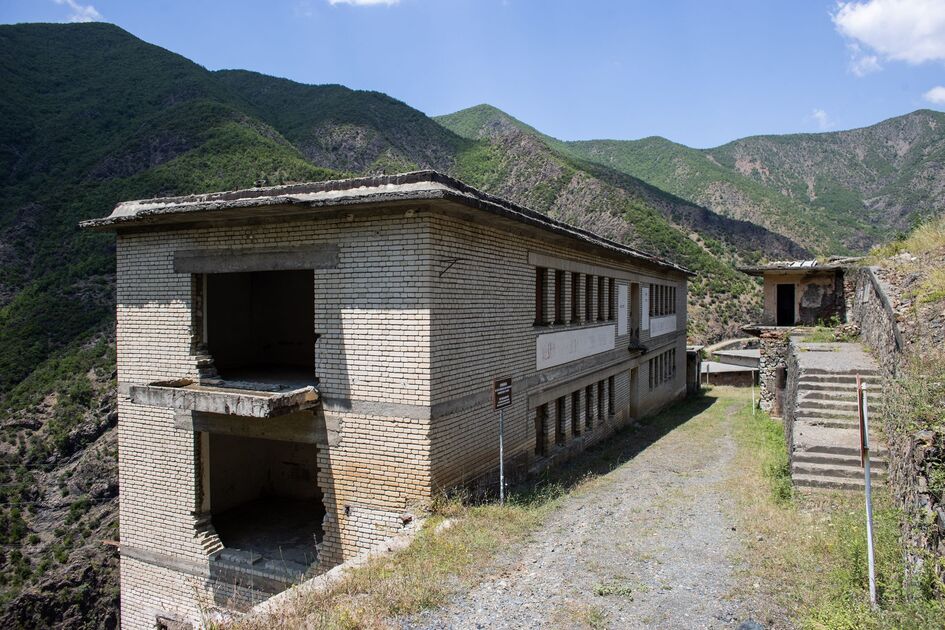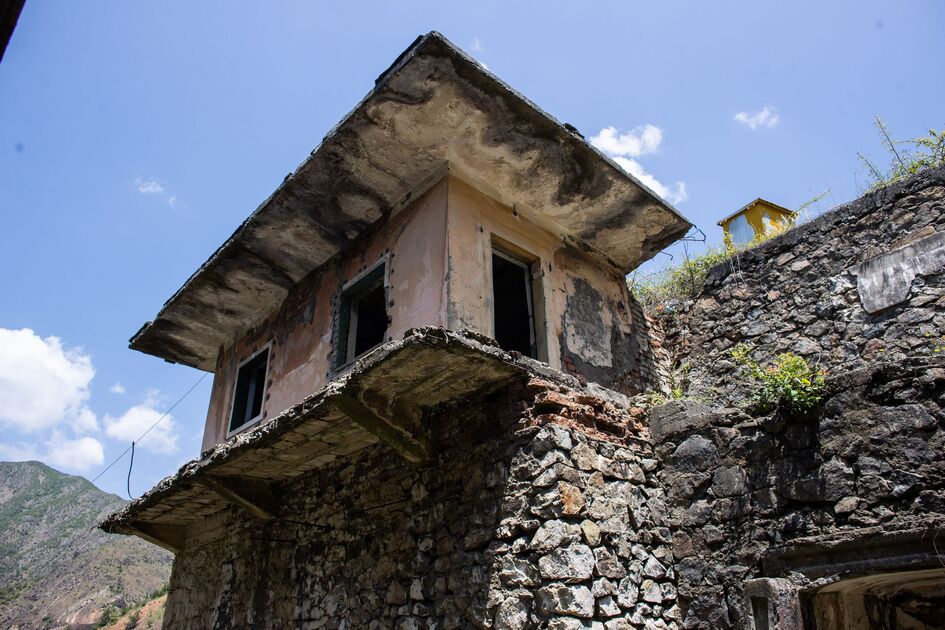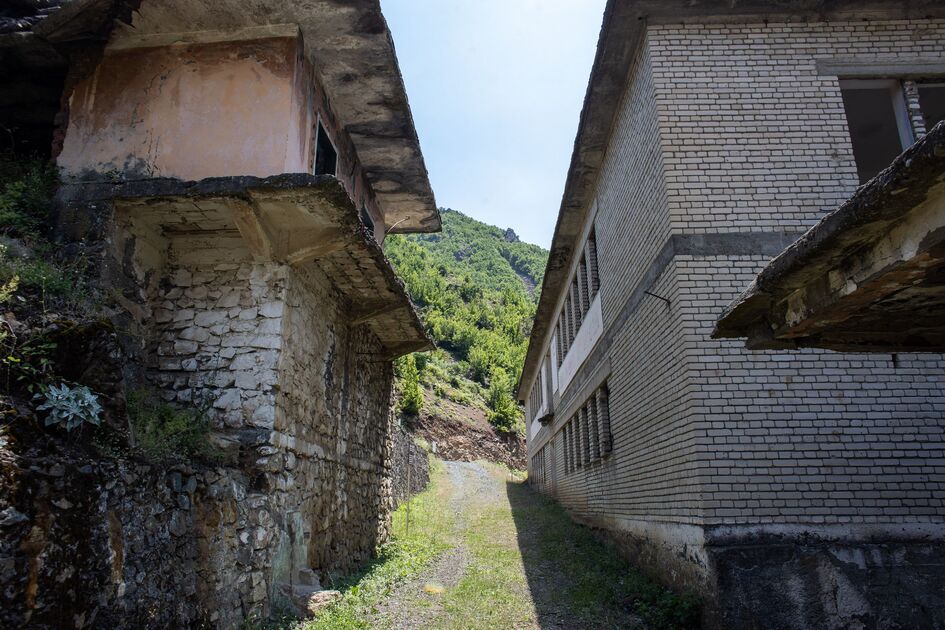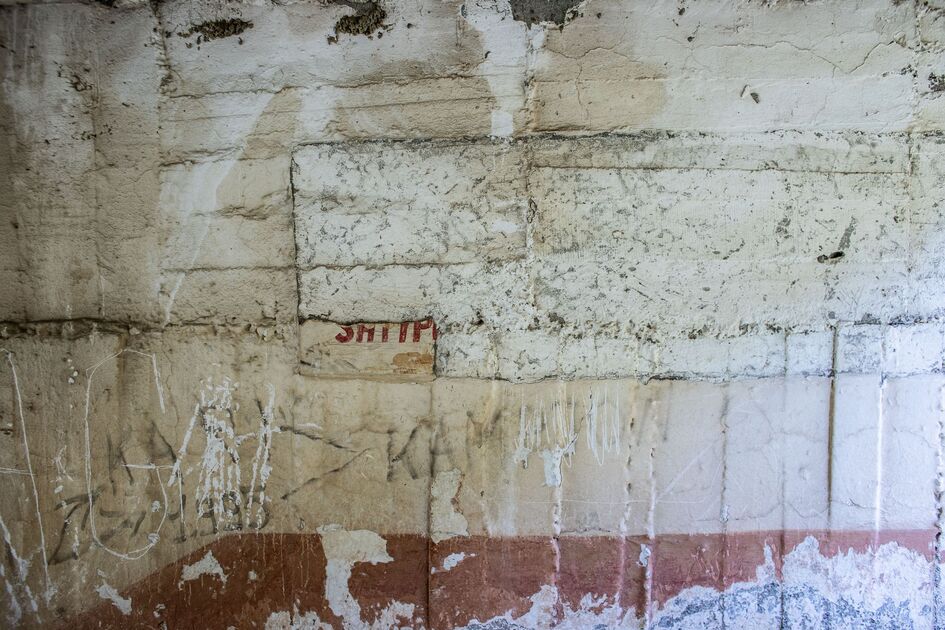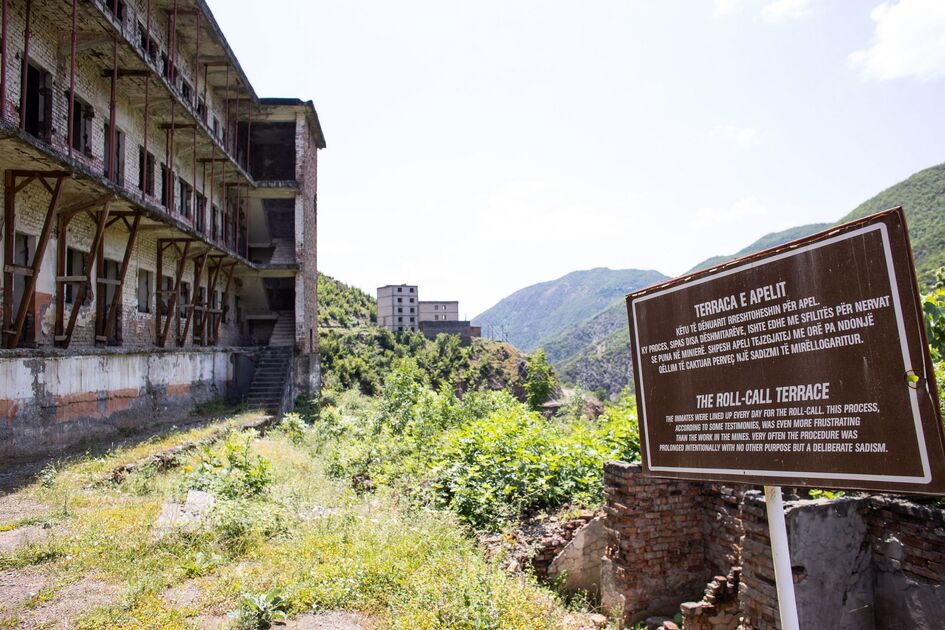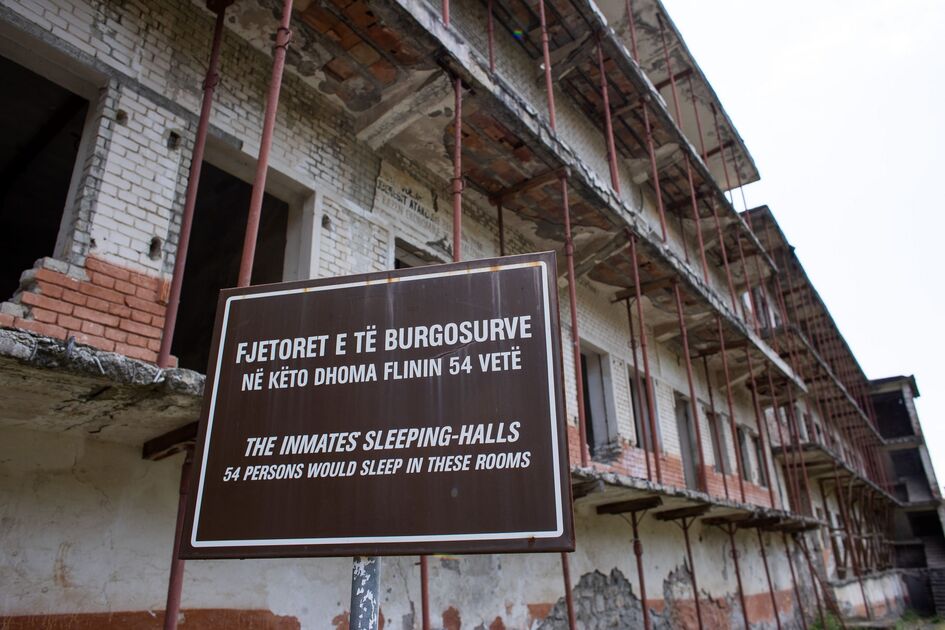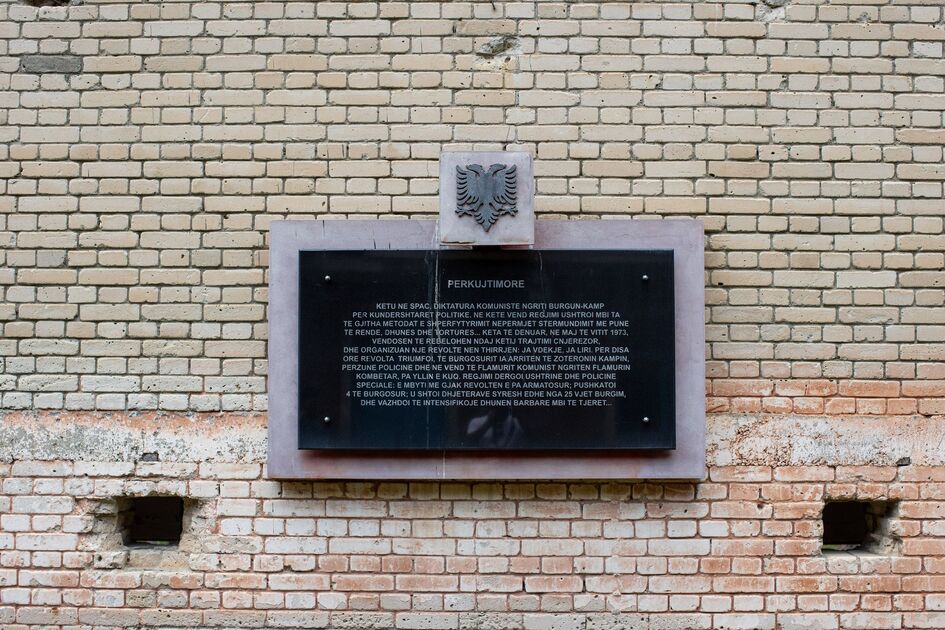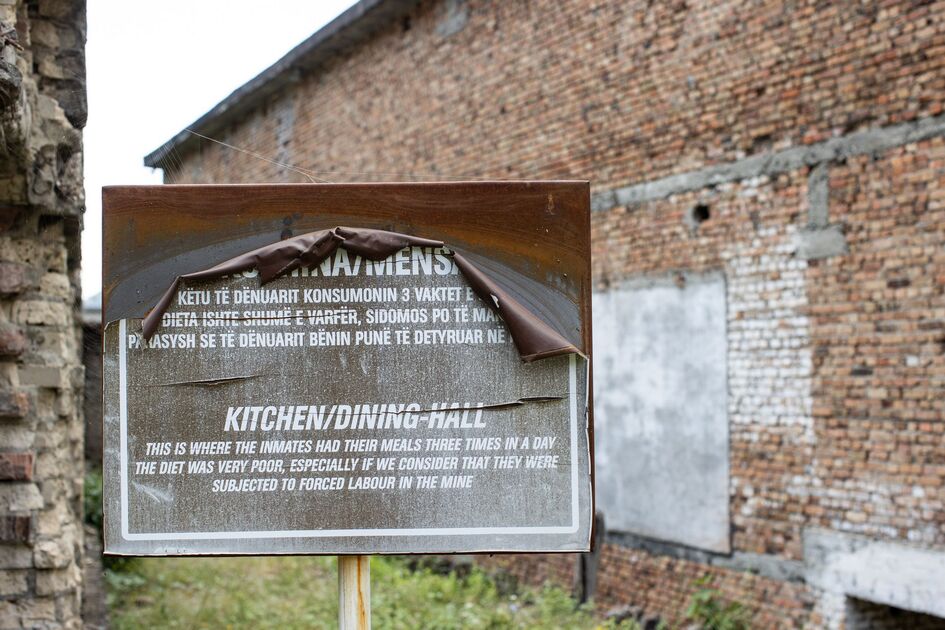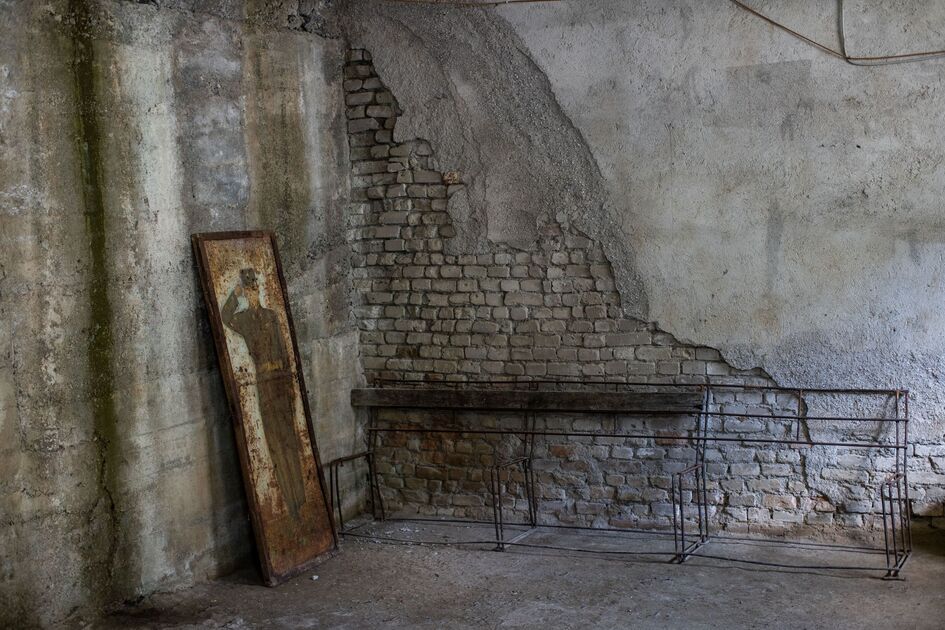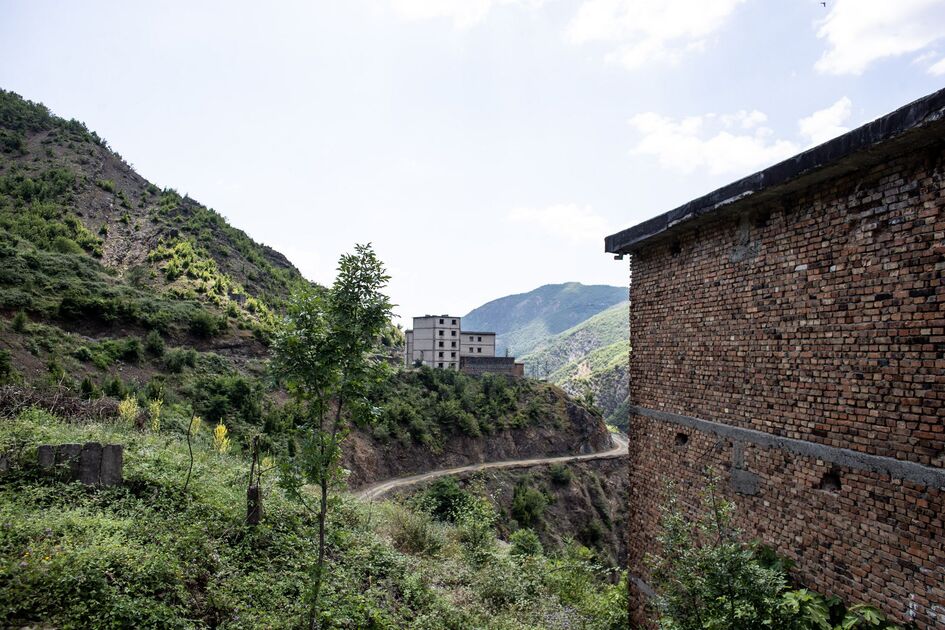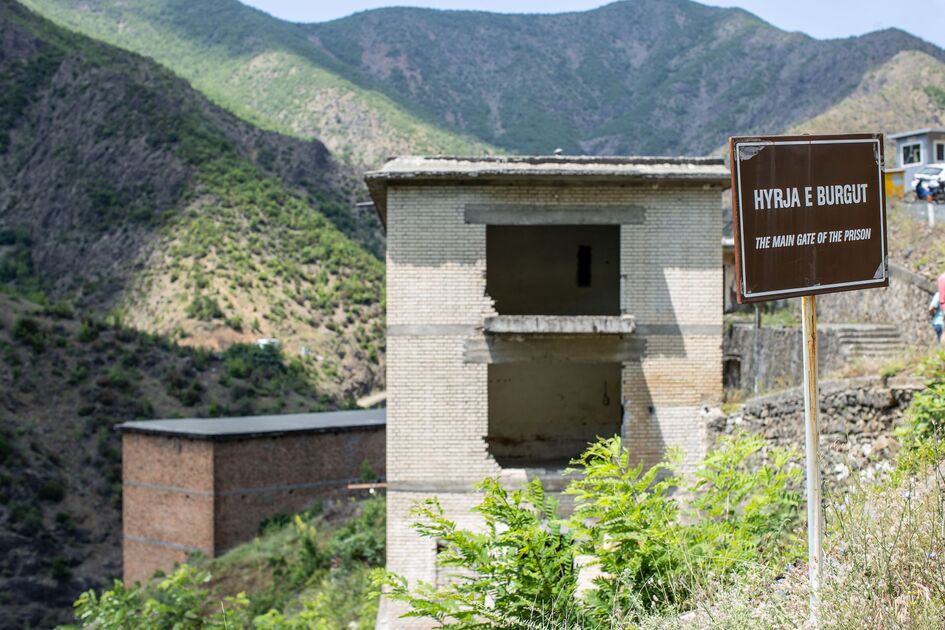SPAÇ PRISON – RE-EDUCATION UNIT 303
Spaç was an active copper and pyrite mine in the 1930s - 1950s.
In 1968 Spaç Prison was opened as "Reeducation Facility 303" - combining prison with forced labor in the mine. Convicts were placed in 7 large barracks made of sheet metal and boards, and in one barrack there were almost 100 convicts. The command was stationed outside the perimeter of the camp. Pyrite and copper continued to be mined in Spaç, and the mine was very primitive, equipped only with some wooden armor and no safety measures.
Spaç was a besieged camp in a difficult terrain. There were 30 guard posts with soldiers and 4 military platoons that served to secure the ward.
The convict in Spaç could only have personal items: 2 pairs of clothes, 1 aluminum or plastic gourd, 1 toothbrush, 1 notebook, 1 bowl, 1 aluminum spoon, 1 mattress, 1 blanket, 1 sheet. According to the internal regulation of the camp, the convicts had to obey the command in everything, fulfill the work norm, etc. They were allowed to take 15 kg of items from their families (fruits and vegetables were not included here); to meet family members twice a month for 15 minutes; to send 2 letters per month to family members (always within the country); to subscribe to the press, etc.. Telegrams and postcards were allowed without restriction and the convict could write letters to the state and party authorities of the time.
On June 17, 1968, the convicts tried to build a tunnel to escape, but they could not. During 1969, 15 people tried to escape, of which 6 were captured or destroyed immediately and 9 others were captured within 8 days.
Barracks were gradually replaced by residential buildings. Around 1971, one of the buildings for housing prisoners was built, and in 1973, work began on the construction of the second one.
In May 1973, the Spači Revolt starts for three days, where the prisoners take control of the prison, demanding human rights
In 1976, ward 303 employed 633 convicts, of whom only 566 were political. The staff of the prison for their preservation at this time consisted of 152 people.
Escapes from the camp could only be made in working hours, through short galleries. Thus, on 9.12.1977, the convicts Stavro Guxo and Manol Qirici made an escape without any injuries.
At the end of January 1977, there were 725 political convicts and 28 ordinary prisoners in the camp, while at the end of September 1979 there were 919 political convicts and 25 ordinary prisoners in the camp.
In Spac, living conditions were extremely difficult. Although not well fed, the convicts had to do very hard work in the mine, not to mention the daily violence that was done to them both physically and psychologically.
The work in the mine was considered dangerous in the reports of the leaders of the Ministry of Internal Affairs and they worked without protective caps on their heads or other safety measures. In 1980 alone, 365 prisoners had accidents, of which 1 died and 12 were seriously injured.
According to the information given by the ward doctor, on 31.5.1980, 531 prisoners were working underground in Spač. 295 worked on the ground and the others did not work due to illness. 128 prisoners needed hospitalization. The camp itself had a compound infirmary with 8 beds. One toilet served 60 prisoners and one shower, if working, served 60 prisoners. When they went outside the room where they slept, a prisoner had 1 m2 of space for ventilation.
In 1981, an average of 1,056 prisoners was created (data for the month of May, 1,023 political and 33 ordinary) while the capacity of the buildings was only for 504 people, more than double! For the months of March-April 1981, 18 deaths were reported in Spaç.
According to the information dated 20.9.1981, the strength of the department, apart from the soldiers, consisted of 1 officer, 7 non-commissioned officers, 29 policemen. Soldiers coming from conscription maintained only the outer guild system. In 1985, the map of ward 303 shows that political and ordinary convicts are separated from each other. Outside the enclosure are the mine offices.
In 1989, the last political prisoners from Spaçi were released, and in the early 1990s, forced labor in Spaçi Prison ended.
In 1995 Spaçi Prison was closed forever. After the 1995-2012 closure, Spaçi Prison was abandoned and gradually dismantled for scrap.
In 2007, a private mining company received permission to use the Spaçi mine, while in December 2007 it was declared a second-category Cultural Monument.
Fotogaleri



